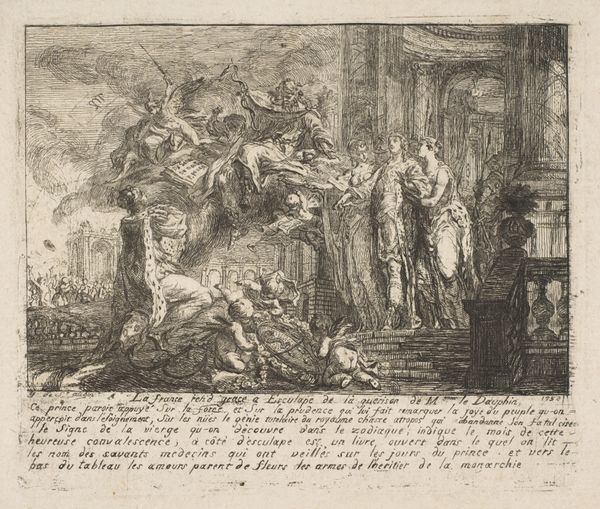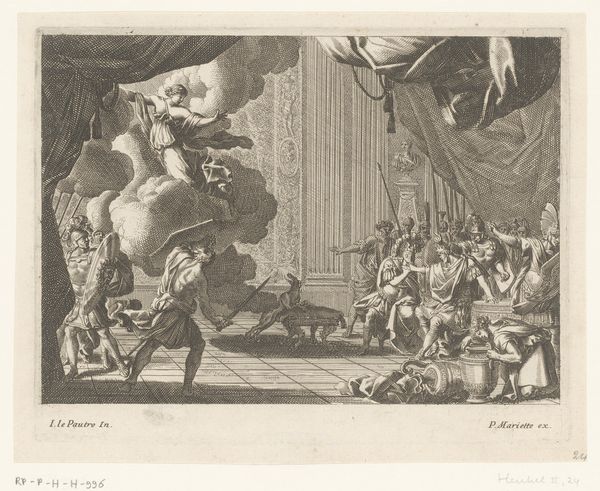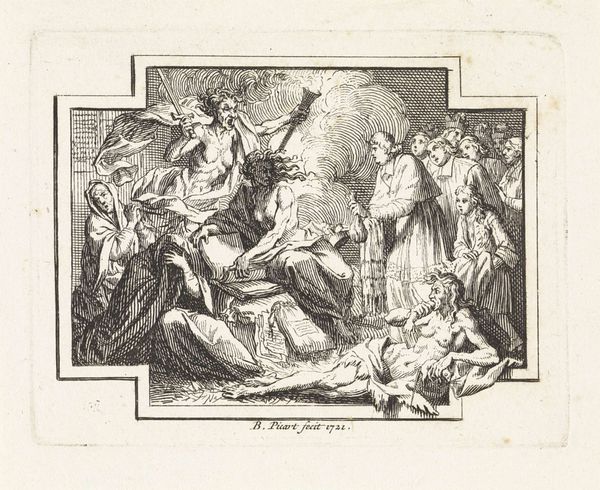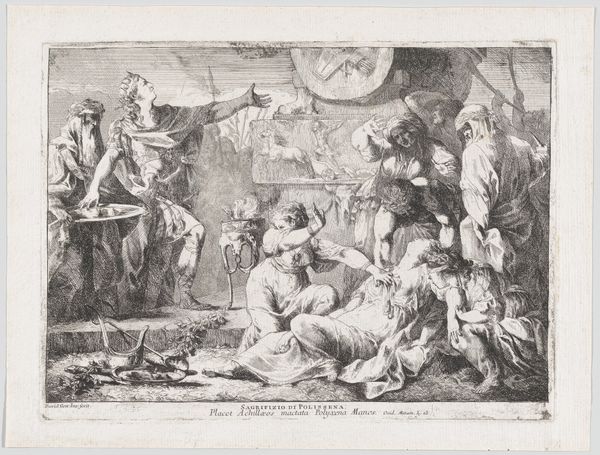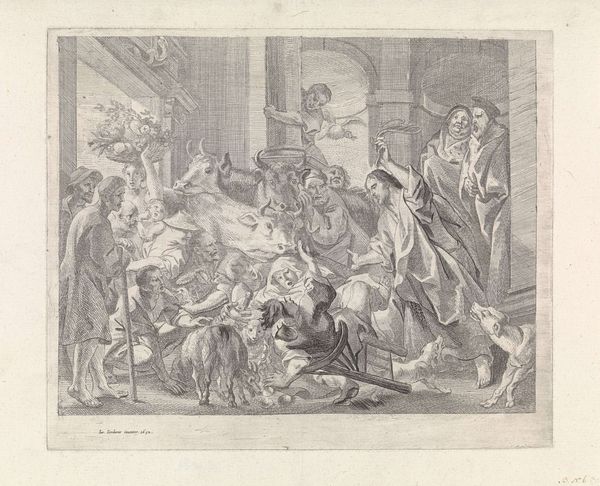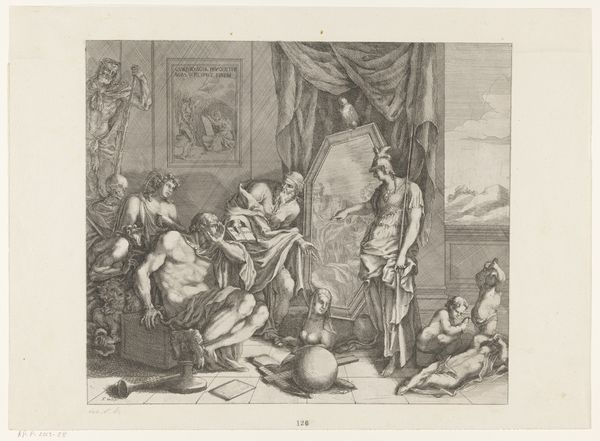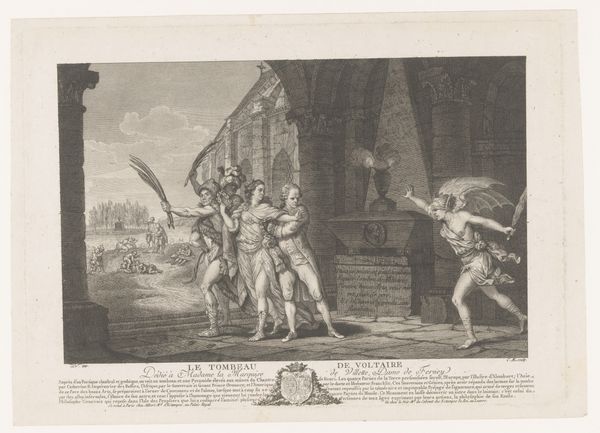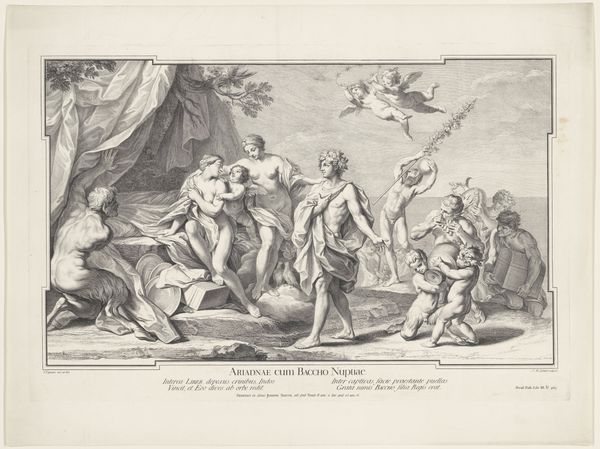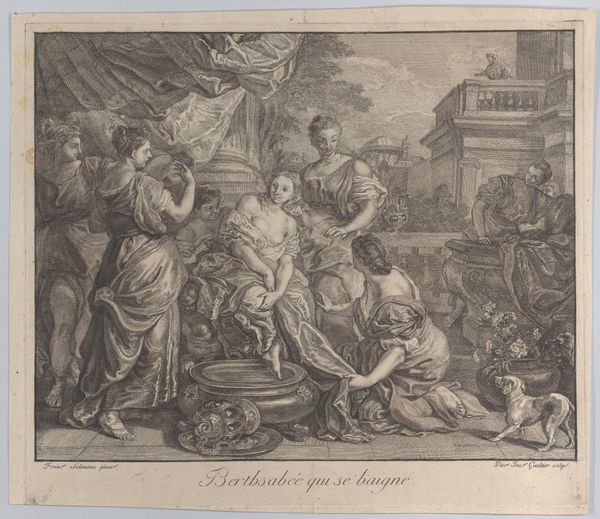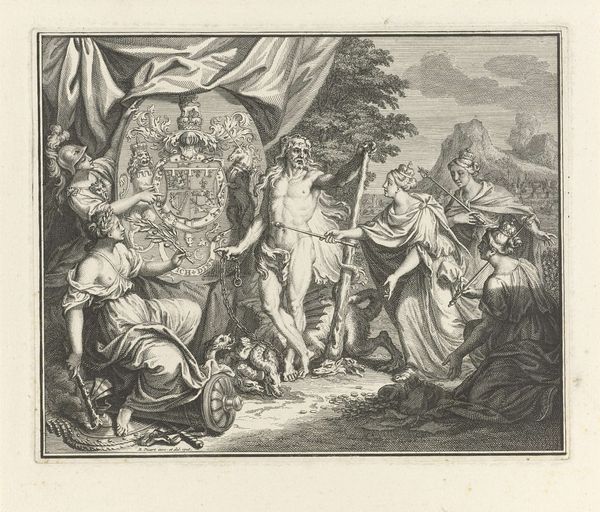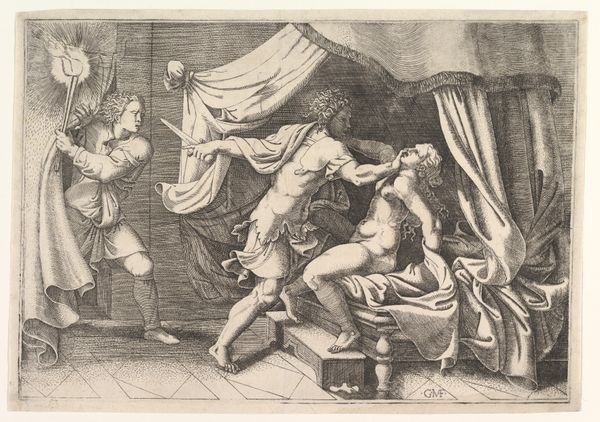
#
pencil drawn
#
photo of handprinted image
#
aged paper
#
light pencil work
#
ink paper printed
#
pencil sketch
#
light coloured
#
white palette
#
ink colored
#
watercolor
Dimensions: height 249 mm, width 301 mm
Copyright: Rijks Museum: Open Domain
Nicolas de Larmessin the Third made this print, Hercules and Omphale, sometime in the late 17th or early 18th century, using an etching technique. The image is created by incising lines into a metal plate, applying ink, and then pressing it onto paper. This process, while seemingly technical, allows for nuanced lines and tonal variations, as you can see in the shading that defines the figures' musculature. The material of the print, paper, is crucial. As an easily reproducible medium, prints like this one allowed stories from mythology to circulate widely through society. Consider how this accessibility democratized classical narratives, making them available beyond the wealthy elite who might have commissioned paintings or sculptures. The story of Hercules and Omphale is all about shifting power dynamics, with Hercules subservient to the Queen of Lydia. It's fitting, then, that the print medium itself embodies a shift in the social dynamics of art, moving away from unique, handcrafted objects and towards mass production. The very process of printmaking challenges traditional hierarchies between art and craft.
Comments
No comments
Be the first to comment and join the conversation on the ultimate creative platform.
